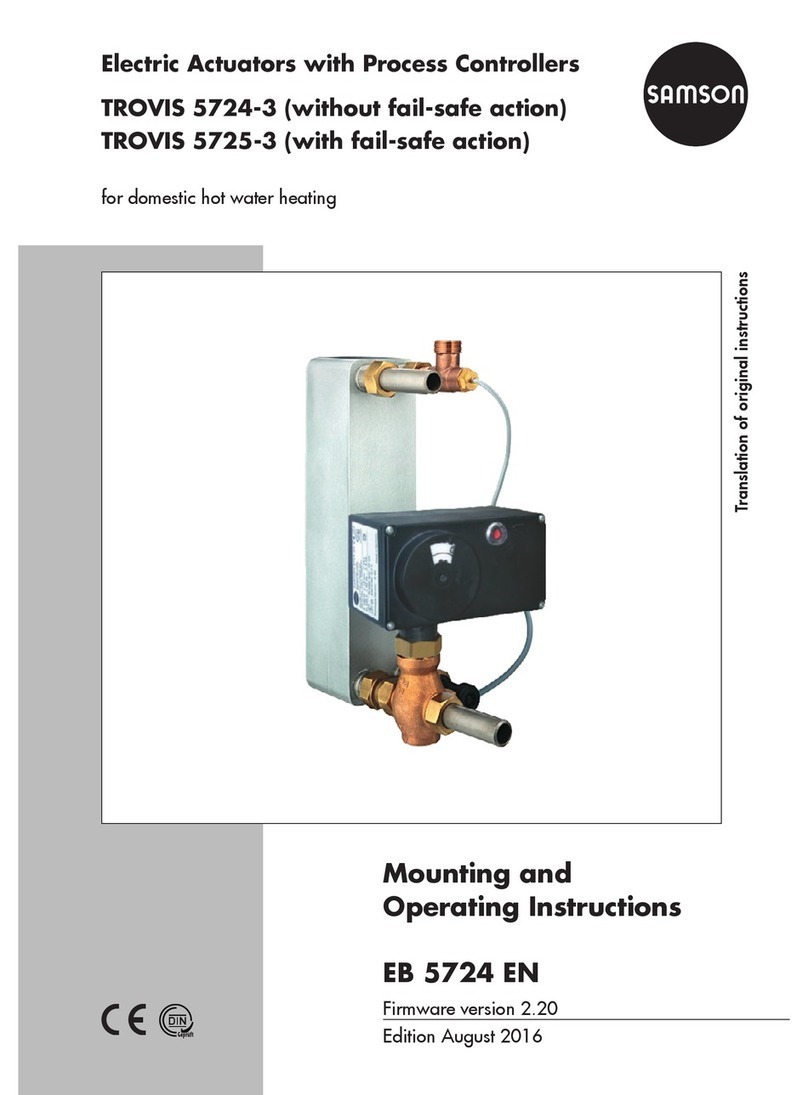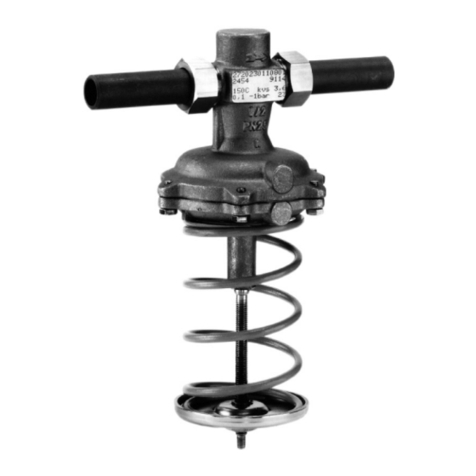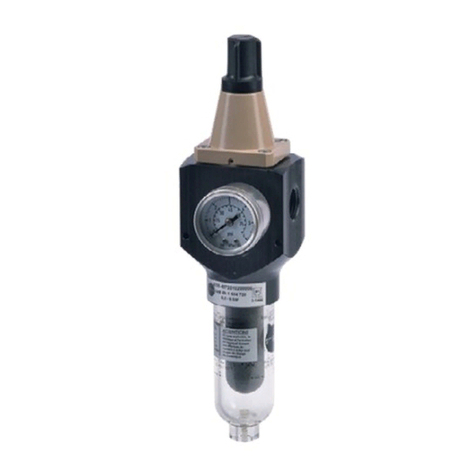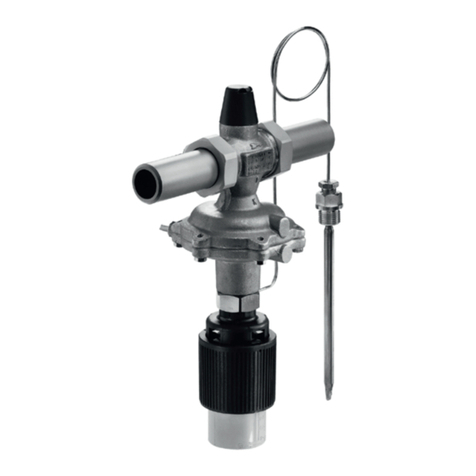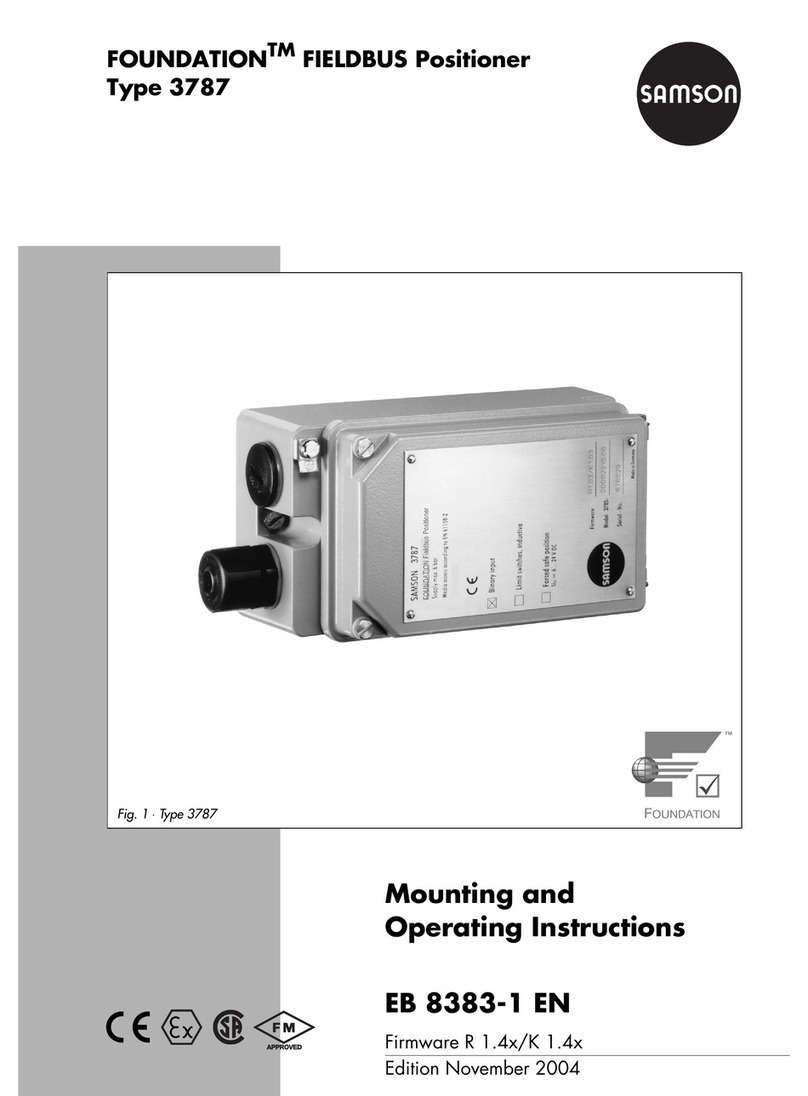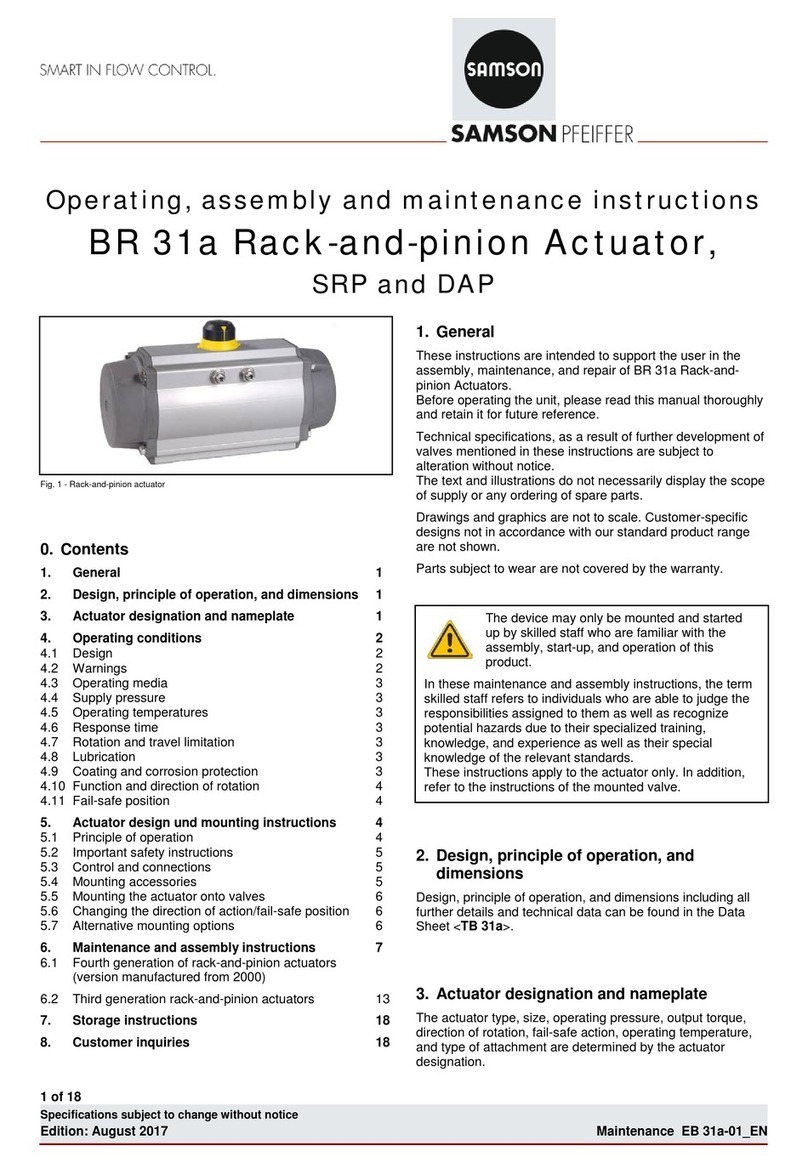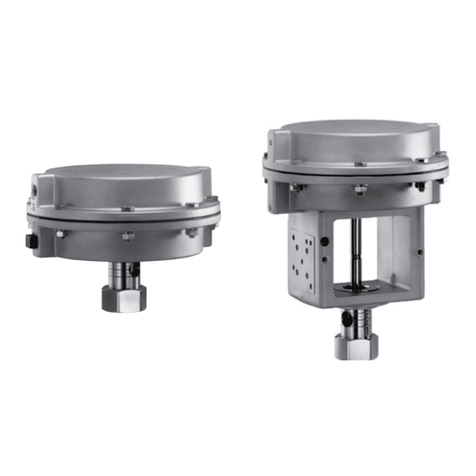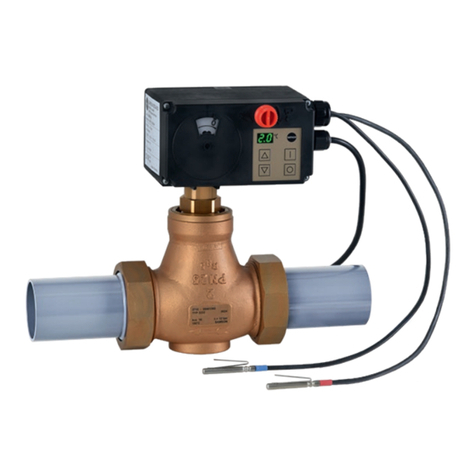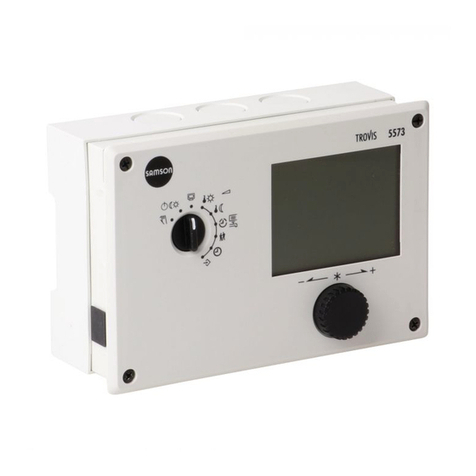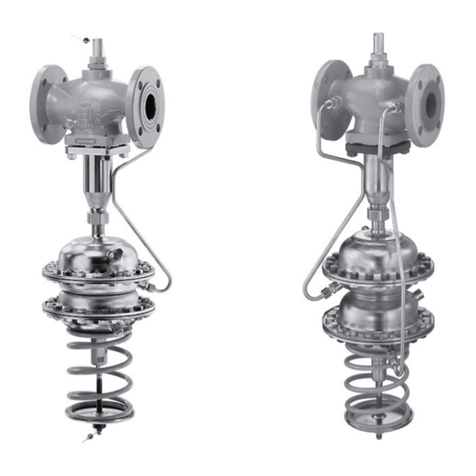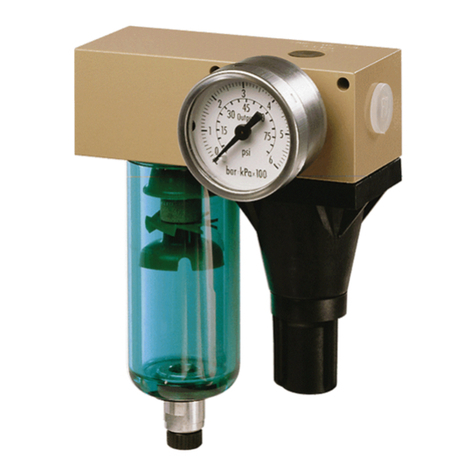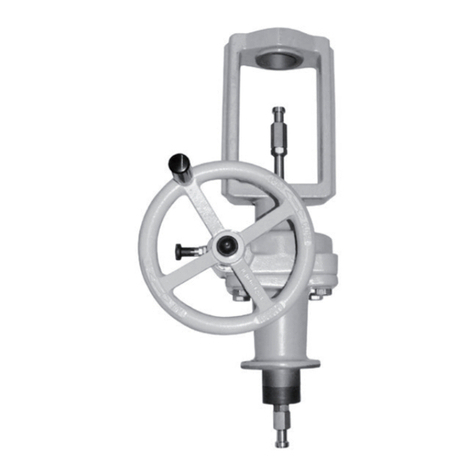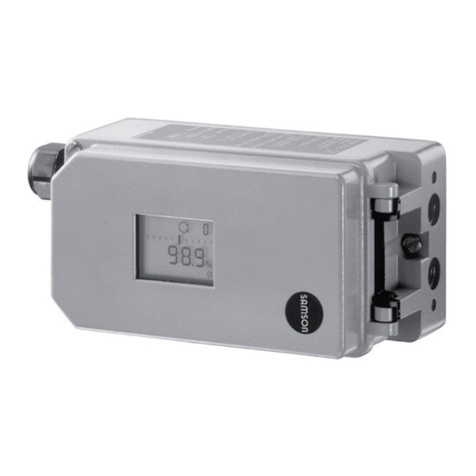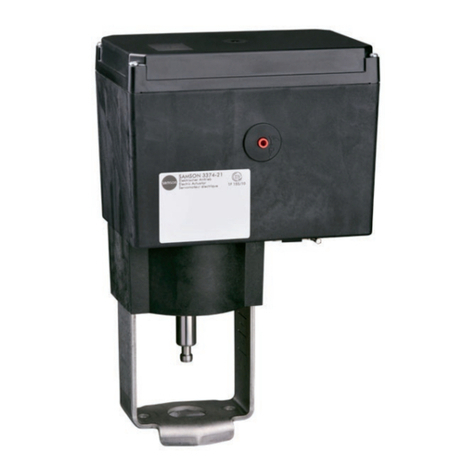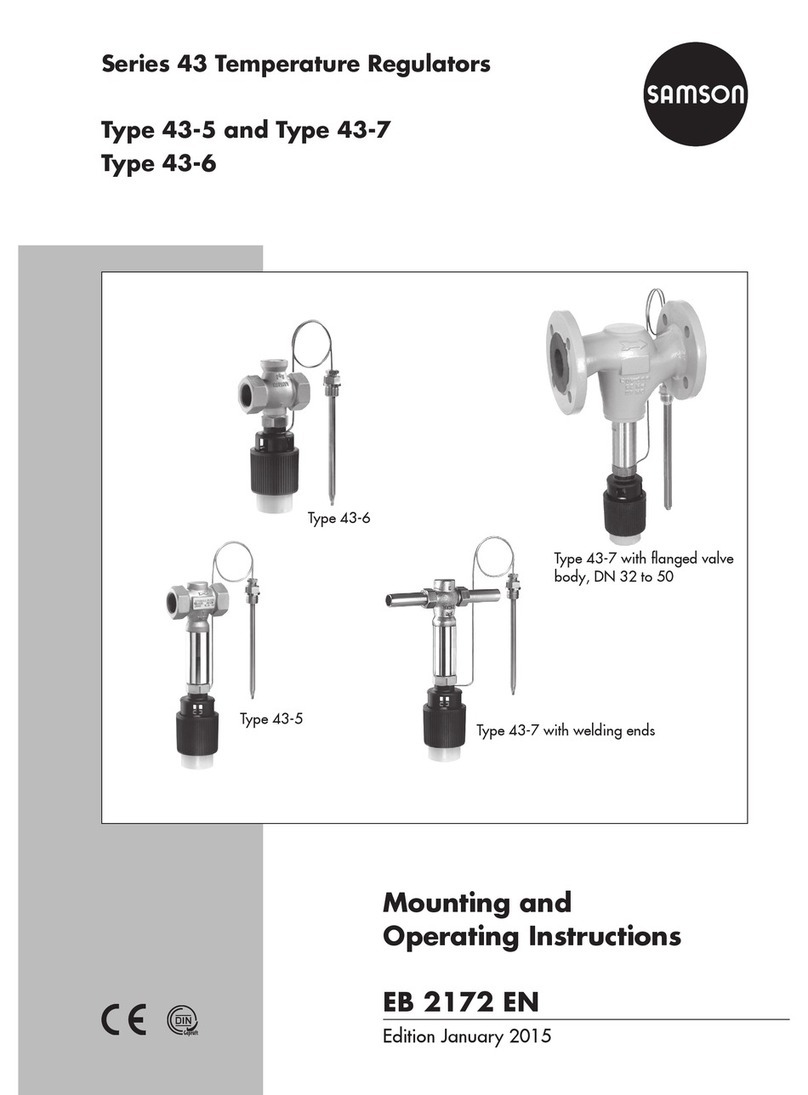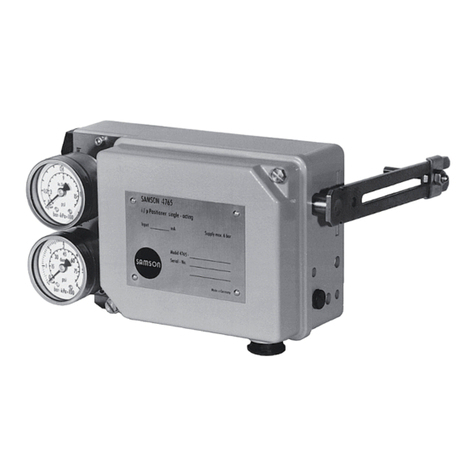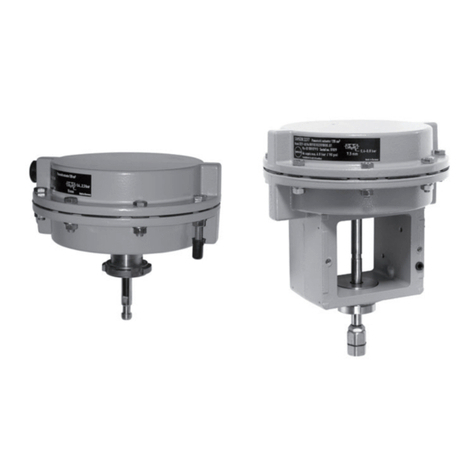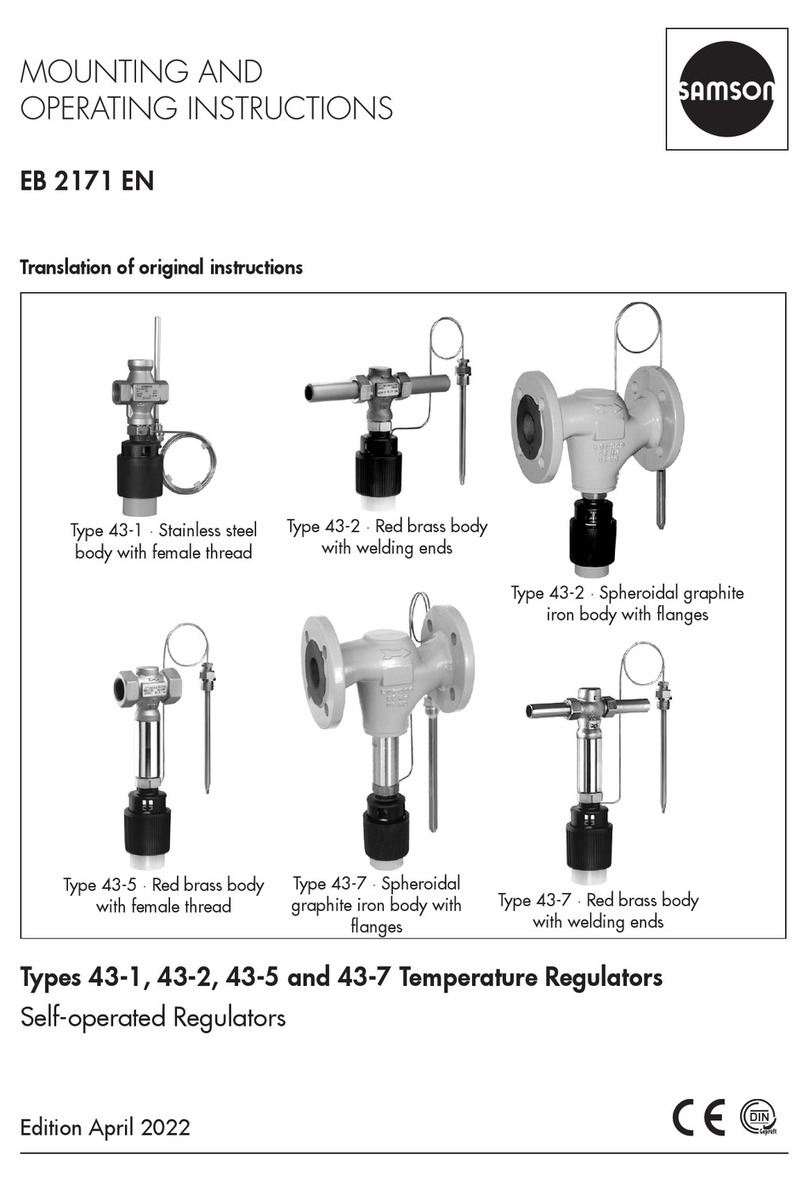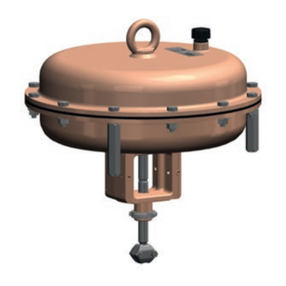
6 EB 7030 EN
Application
2 Application
The Series430 Pneumatic Controllers are
used for the automation of process and in-
dustrial plants.
The controllers measure directly the
controlled variable (pressure, temperature,
electric or pneumatic standardized signal),
compare the measured value with the set
point and issue a pneumatic control signal of
0.2 to 1bar (3 to 15psi).
A supply pressure of 1.4bar ±0.1bar
(20psi ±1.5psi) or an operating air pres-
sure of 2 to 12bar (30 to 180psi) with an
installed supply pressure regulator is re-
quired.
3 Operation
3.1 Settings at the controller
modules
The controller module in the station can be
accessed after releasing the lock (4, Fig.1)
and opening the indicating unit (5).
The settings for direction of action (turnboard
A) and air delivery (turnboard B) must be
performed prior to start-up.
Unscrew the fastening screw (6) at the con-
troller module, pull the module off its self-
seal push-on ttings and lift it out of the con-
troller station.
3.1.1 Direction of action
The direction of action for the control loop is
set at the turnboard A, where the position of
its arrow symbol according to the arrow
symbol on the controller module determines
the direction of action of the controller
(Fig.1).
Arrow tips facing opposite directions:
Direction of action: increasing/
decreasing
As the controlled variable x
increases, the output pressure y falls.
Arrow tips facing the same direction:
Direction of action: increasing/
increasing
As the controlled variable x
increases, the output pressure y
increases.
Setting or changing the direction of action:
Undo the screw in turnboard A (Fig.1) and
lift it off together with the turnboard. If nec-
essary, lever the board at the side. Do not
lose the rubber seal.
Î Turn the board by 90° so that the re-
quired arrow is aligned with the arrow
on the base plate.
ÎInsert board and tighten the screw.
ÎRemount the controller module and
fasten it in the controller station.
